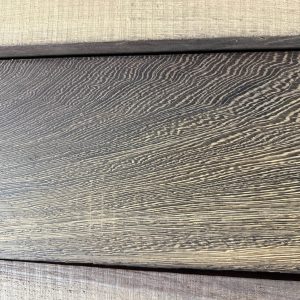Find Your Perfect Wood Product
If you find a product you like, reach out to us for more details and assistance.
Ziricote
Ziricote is an exotic wood native to the Central American countries of Belize, Guatemala, and Mexico. It is a hard, dense wood, with a medium texture. The color ranges from reddish brown to dark brown with unusual black streaks. Ziricote is excellent for wood turning and carving, as well as knife handles, furniture, and cabinets. It works very nicely and finishes well to a high luster.
Length: Not specified
Thickness: Hit and miss to 15/16 inches
- Common Name(s): Ziricote
- Scientific Name: Cordia dodecandra
- Distribution: Central America, primarily Mexico, Belize, and Guatemala
- Tree Size: 65-100 ft (20-30 m) tall, 2-3 ft (0.6-1 m) trunk diameter
- Average Dried Weight: 50 lbs/ft³ (800 kg/m³)
- Janka Hardness: 1,970 lbf (8,760 N)
- Crushing Strength: 9,860 lbf/in² (68.0 MPa)
Heartwood: Medium to dark brown with irregular darker brown to black streaks.
Sapwood: Pale yellow to beige, clearly demarcated from heartwood.
Grain: Straight to slightly interlocked.
Texture: Fine to medium with a good natural luster.
Rated as very durable and resistant to most insect attacks.
Ziricote is generally easy to work with, although pieces with interlocked grain can cause tearout during machining. Turns, glues, and finishes well. Natural oils may interfere with the gluing process, so care must be taken.
- Fine furniture
- Veneer
- Turned objects
- Specialty wood items
- Musical instruments






Ziricote is highly prized for its unique appearance, often described as “spider-webbing” or “landscape” grain patterns. It is a dense, durable wood that is popular for high-end woodworking projects. The wood’s natural luster and striking patterns make it a favorite for decorative applications.
Note: Ziricote is not listed in the CITES Appendices or on the IUCN Red List of Threatened Species, but sustainable sourcing practices are still recommended to protect this valuable resource.